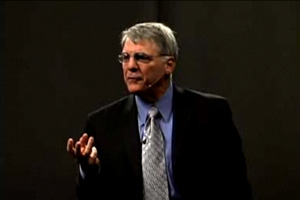Learn From the Dental Industry's TOP LEADERS!
Sit Chairside withDr. Dennis WellsCreator ofDURAthin® Prepless Veneers- OR -
|
Biometric Analysis and Comparisons of Normal and Adapted Conditions
DescriptionThis program is one of five programs that were presented in an all day seminar titled "From Tooth to Migraine: The Trigeminally Mediated Disorders; Diagnosis, Treatment and Prevention." The goal of this program is to take the mystery out of the cause and progression of TM disorders and to make the evidenced based information useful in this regard. From pratical and relevent anatomy and physiology to the important concept of trigeminally initiated and mediated parafunction and parafunctional control, this 5-part program will attempt to separate fact from fiction. Diagnostically driven concepts will be thoroughly reviewed. Specific injuries that lead to both acute and chronic pain patterns will be described in terms of causes, diagnosis and treatment. It will be demonstrated that dentists can play a key role in magraine headaches as well as obstructive sleep disorders. In this third program, Dr. Glassman discusses the use of EMGs as a diagnostic tool for TM disorders. AGD course code: 204
Last Reviewed: 07/29/2012 Disclaimer: No commercial support was received for this program. The speaker did not recieve commerical support. Objectives
OutlineI. The myths about TMD/TMJ. II. Review of earlier courses. a. Adaptation. b. Pathofunction. c. Parafunction. III. EMG of normal function and parafunction. IV. Demonstration using BioPak. ReferencesForssell H., Kalso E. Application of principles of evidence-based medicine to occlusal treatment for temporomandibular disorders: are there lessons to be learned? J Orofac Pain 2004; 18(1): 9-22 Klasser GD., Okeson JP. Clinical usefullness of surface electromyography in the diagnosis and treatment of temporomandibular disorders. J Am Dent Assoc. 2006 Jun;137(6):763-71. |
 Submitting...
Submitting...


 FAGD/MAGD Credit Approval does not imply acceptance by a state or provincial board of dentistry or AGD endorsement 7/31/2018 to 7/31/2021 Provider ID# 317928
FAGD/MAGD Credit Approval does not imply acceptance by a state or provincial board of dentistry or AGD endorsement 7/31/2018 to 7/31/2021 Provider ID# 317928